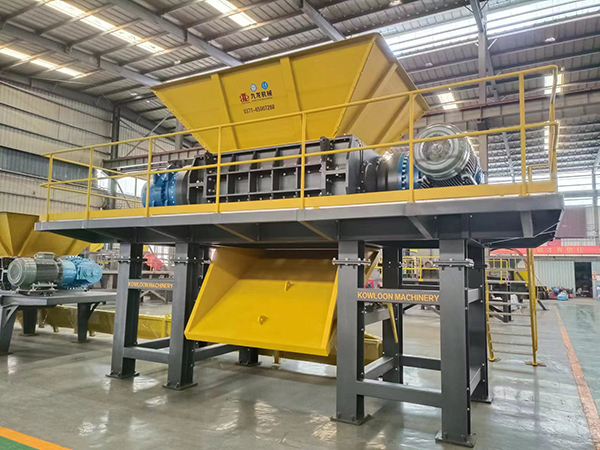
Tel/Whatsapp:+86 15649675999
Email:sale@kowloonmachine.com

Tel/Whatsapp:+86 15649675999
Email:sale@kowloonmachine.com
Article published:2023-11-16
How does the paint bucket shredder work?
What are the advantages?
The paint bucket shredder has the remarkable characteristics of flexibility, convenience, compact structure, and large output. The paint bucket shredder is mainly used in large-scale waste recycling stations. The paint bucket shredder can crush Lulu cans, Red Bull beverage cans, beer cans, Various cans such as oil barrels and paint cans are broken into pellets to reduce transportation costs and increase the speed of scrap iron being put into the furnace for ironmaking. Next, let me briefly introduce to you the working principle and advantages of the paint bucket shredder.

The paint bucket shredder delivers the materials to the running paint bucket shredder, which is shredded by specific blades. There is a filter device designed inside the equipment. When the plastic shredder is working normally, the filter screen separates the materials. and liquid, so that the liquid remaining on the bottle can be effectively recycled. This is how the paint bucket shredder works.
The paint bucket shredder also has the following advantages:
1. The blade of the paint bucket shredder is wear-resistant and thick, and is cast from alloy steel. It has high shredding efficiency and a long service life.
2. The main body of the chassis is reasonably designed and the plate is used to resist higher torque during shredding work.
3. Microcomputer automatic control is adopted, with start, stop, reverse and overload automatic reverse control functions.
4. This shredder has the characteristics of low speed, large torque, low noise, and dust can meet environmental protection standards.
5. Reasonable design, simple operation and easy maintenance.
6. The thickness of the tool and the number of claws can be changed according to different materials.